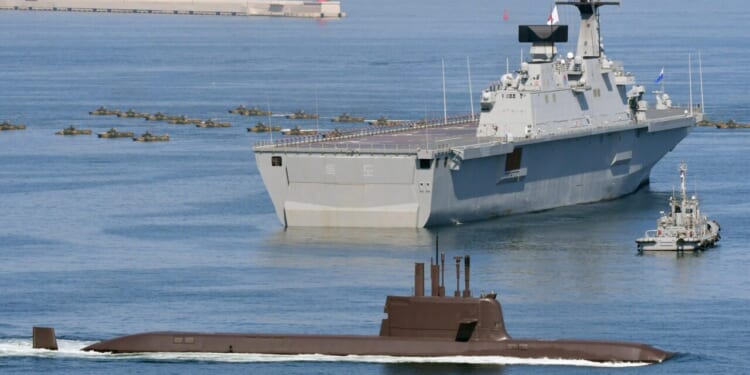The launch of Seoul’s newest submarine marks a major milestone in the country’s undersea efforts.
As Pyongyang continues to ramp up hostilities targeting its southern neighbor, Seoul is prioritizing its own defensive measures. In addition to the threats posed by the decades-old Korean War, which is technically ongoing, Seoul is also preparing for a potential flare-up in violence with Beijing. In light of these background tensions, Seoul recently launched its largest and most formidable submarine yet. As the lead boat in the second batch of its KSS-III program, the “Jang Yeong-sil” is expected to lead Seoul’s underwater strategy for decades to come.
As part of the Jang Yeong-sil’s launching ceremony at Hanwha Ocean’s shipyard in Geoje, various senior military officials, including the Chief of Naval Operations adm. Kang Dong-gil, were in attendance. In his remarks, Dong-gil noted, “Admiral Son Won-il, the father of the ROK Navy, once said, ‘The Navy itself is created through the integration of the finest and most advanced elements of modern science.’ I am confident that the ROKS Jang Yeong-sil, built with our own technology, will serve as a signal flare for the Navy’s leap toward becoming a smart, elite force, and will fulfill its role as a core asset in safeguarding the Republic of Korea’s maritime sovereignty.” Compared to Seoul’s existing Batch-1 submarines in this class, the Jang Yoeng-sil represents a great leap forward in terms of technology and capability. From its enhanced combat and sonar system and new lithium batteries to its improved stealth and increased survivability, the latest South Korean submarine is quite lethal.
The KSS-III Submarine
The KSS-III submarine class is the result of a joint design effort by Daewoo Shipbuilding and Marine Engineering and Hyundai Heavy Industries. Back in 2019, the construction of the Jang Yeong-sil was first green-lit, followed by the boat’s keel-laying ceremony in 2023. The original Batch II boats in this class feature greater capabilities than the preceding Batch I-class. As mentioned previously, the newer submarines are equipped with a more sophisticated combat system and sonar system. In terms of armament power, the Batch II’s vertical launch system (VLS) capability is also enhanced. The KSS-III in its Batch I form is able to accommodate provisions for six VLS cells, which are able to launch both cruise missiles and submarine-launched ballistic missiles. The Batch II submarines can notably accommodate an increased VLS cell capability of 10. As explained by The War Zone, “Few details are known about the SLBM itself, which is variously named Hyunmoo-IV-4 or K-SLBM. Early reports suggested the missile has a range of 311 miles and that it could be a naval variant of the Hyunmoo 2B ballistic missile. More recently, it has been attributed to a range of 497 miles.”
Based on these specs and capabilities, the launching of Seoul’s newest submarine marks a major milestone in the nation’s efforts to strengthen its undersea fleet to counter threats from both Beijing and Pyongyang.
About the Author: Maya Carlin
Maya Carlin, National Security Writer with The National Interest, is an analyst with the Center for Security Policy and a former Anna Sobol Levy Fellow at IDC Herzliya in Israel. She has by-lines in many publications, including The National Interest, Jerusalem Post, and Times of Israel. You can follow her on Twitter: @MayaCarlin. Carlin has over 1,000 articles published over the last several years on various defense issues.
Image: Yeongsik Im / Shutterstock.com

















